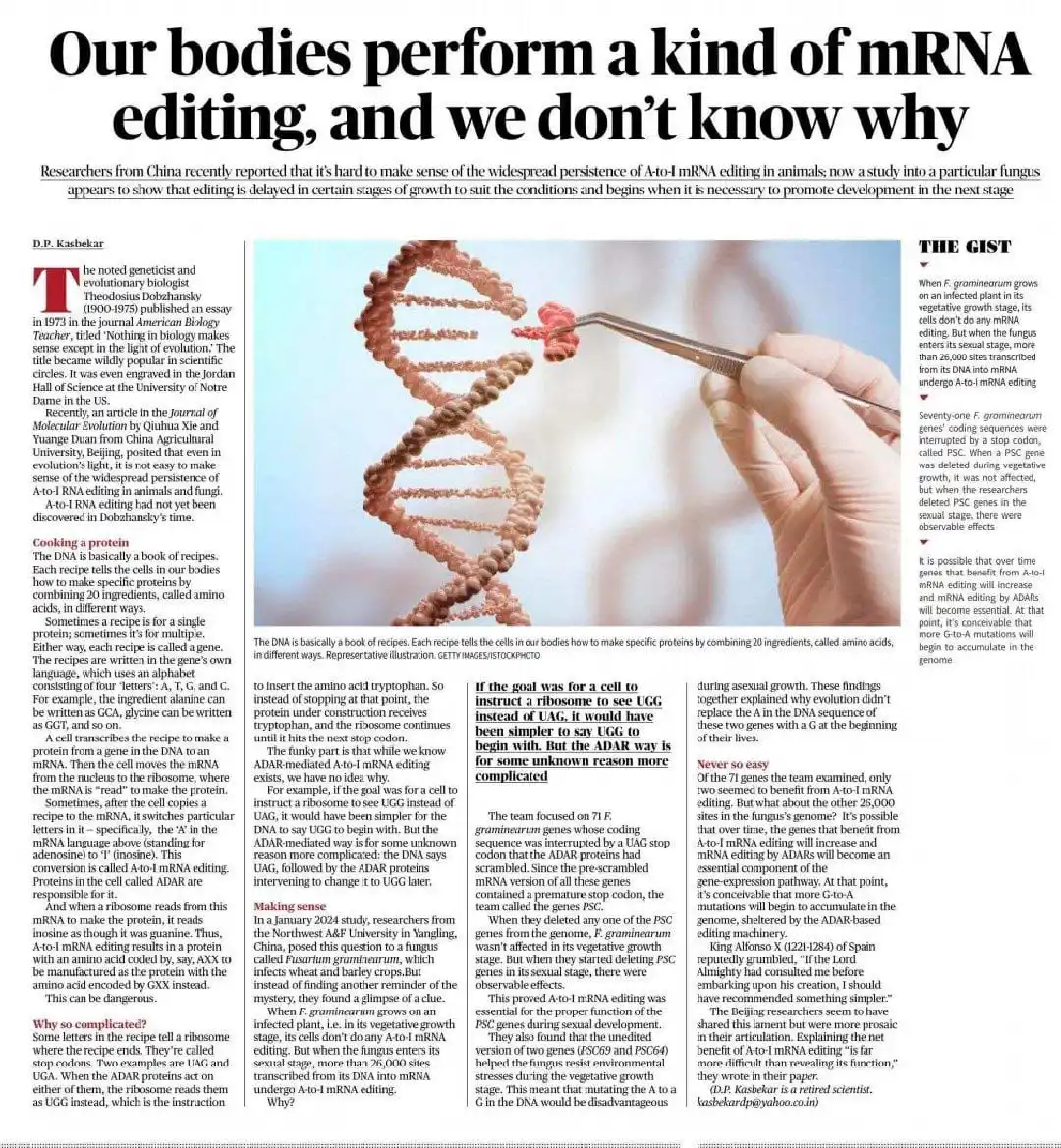
UPSC Science Technology UPSC UPSC UPSC UPSC Upsc Upsc Upsc Upsc UPSC BPSC MPPSC UPPSC CAPF CDS NDA™
May 19, 2025 at 02:21 PM
🔆A-to-I mRNA Editing in Animals
✅Researchers from China recently reported that it’s hard to make sense of the widespread persistence of A-to-I mRNA editing in animals.
📍Concept and Mechanism
✅DNA acts like a recipe book for building proteins using 20 amino acids. Each recipe (i.e., gene) is transcribed into messenger RNA (mRNA).
✅The mRNA is then read by ribosomes to assemble proteins. The mRNA is composed of four nucleotide bases: A (adenosine), U, G, and C.
✅In A-to-I mRNA editing, the adenosine (A) in mRNA is enzymatically converted into inosine (I) by proteins called ADARs (Adenosine Deaminase Acting on RNA).
✅The ribosome reads inosine as guanine (G), altering the protein’s amino acid sequence post-transcriptionally, without any change in the DNA.
✅Functional Impact: A-to-I editing can change the codon identity, thereby producing a different amino acid in the resulting protein.
✅This may lead to functional protein diversification and alteration in protein stability or activity.
✅A major risk is misreading stop codons:
🔰A stop codon like UAG or UGA may be edited to UGG, coding for tryptophan.
🔰This allows the ribosome to continue protein synthesis, potentially creating abnormally long or malfunctioning proteins
#gs3
#science_technology

❤️
1